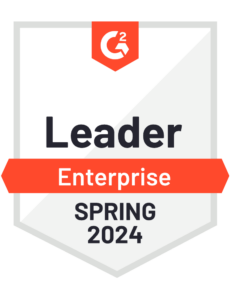Secure Trust Bank Transforms Record to Report Process with Cadency
Blog post
Share
Recently, Trintech sat down with Emmanual Ranchin, a Strategic Systems Manager for Secure Trust Bank, in order to understand Cadency’s impact on their organization. Secure Trust Bank is a rapidly growing bank headquartered in Solihull that has over 950 employees across the entire United Kingdom. Their current business model covers three different sectors: Consumer Mortgages, Consumer Finance and Business Finance.
Trintech: Hi Emmanuel! Thanks for taking the time to talk to us. I’m interested to hear what your career progression has been to date and how you found yourself running the R2R transformation project at Secure Trust Bank?
Emmanuel: I have an unusual background to be running R2R projects. I’m a chemical engineer, and after completing a four year Ph.D. at Trinity College in Dublin proving the chemical reaction behind super glue’s success, I worked for Citibank, RBS and the Allianz Group running process improvement and migration projects which led me to my current role as Strategic Manager in the Finance Transformation Project at Secure Trust Bank.
Trintech: That’s an interesting path! How did you find out about Cadency and why did you decide to deploy it across your organization?
Emmanuel: I came across Trintech in industry magazines and at conferences. Our process of financial control was supported entirely by Excel spreadsheets that were becoming increasingly unwieldy to use. Therefore, financial control was suffering from a relative lack of visibility of the balance sheet reconciliation process. Given the growth of Secure Trust’s balance sheet, it was imperative that a more sustainable solution be implemented.
I found that Cadency offered a full end-to-end approach, starting with Certification, Close and then Compliance, not to mention further development potential with Match. There was a lack of automation, reliance on Excel and manual work required, which were the main drivers for looking for a way to streamline the reconciliation and auditing processes.
Trintech: It’s great to hear that Cadency helped address those challenges for you! How has your day to day changed since Cadency was implemented, and what has the technology-enabled you to do?
Emmanuel: Since implementing Cadency Certification, we have been able to clean up our balance sheet by adopting a more systematic approach to managing information, and we can now gain a clearer reconciliation status at any point in time which in turn, has improved the quality. Since going live, we are at 25% fewer reconcilers and have a 20% increase in group accounts. With the implementation of Cadency Close, there is a more streamlined close process that supports cycle time reduction, and we have a repository for process notes, maps and system requirements.
Trintech: And how has Cadency impacted your role and team?
Emmanuel: Cadency has given the team ownership of supporting the application, which enabled us to be more in touch with managing static data on the general ledgers, increasing control all around. Having a full, end-to-end solution that isn’t a ‘one size fits all’ product answers our needs to improve productivity, engagement and retention, meaning people are happier in their job and are able to focus on ‘analyzing’ rather than spending time gathering and aggregating data.
The rollout also provided development opportunities for the team on the application through further training, but also in terms of project management skills for the close rollout, which was managed internally by the team.
Trintech: That’s fantastic that Cadency has really helped improve the morale of your team! What do you predict will be the next key innovation in accounting and finance?
Emmanuel: The next thing for us is to remove the last mile obstacle of system integrations – further connection and integration of data feeds, the possibility to apply intelligent processes to automate interfaces and less of a need to IT involvement. Currently, there are still manual steps required, which increases risk and requires resource dependencies. A significant amount of time is still spent sourcing, aggregating and normalizing data. Beyond that, deeper RPA integration is needed to carry out automated reconciliations with notification workflow. We look forward to working further with Trintech and Cadency to close these gaps.
Trintech: With a new generation of recruits coming on board, do you see a difference in their expectations as they come into the workplace and the tools they require?
Emmanuel: Yes! The young people we are seeing come into the roles now are more able to adopt and relate to the applications, but it means we also must deliver on their requests for improvements and have to make sure we have an application that works. On the other hand, we are finding fewer people who understand and know how to use Excel in the scope of the role, and this still is required.
Trintech: That’s some really interesting insight. One last question from us. We’re lucky enough to have you as a regular attendee of Trintech’s events and alliances. Can you tell us about your experiences at these events?
Emmanuel: Trintech’s events and alliances are valuable opportunities to share experiences with your peers, learn from each other and answer questions. A common question I receive at the Lunch and Learn events I have taken part in centers around the perception of Cadency being a cost or headcount reduction exercise.
My answer is that this really needs to be seen as a solution for greater control over month-end processes. It is much more important to see the solution as a facilitator of continuous improvement of your financial management and a great enabler to improve granularity and visibility and provide a full audit trail, allowing you and your team to be much more proactive.
To learn more about Secure Trust Bank’s success story, check out the case study.






